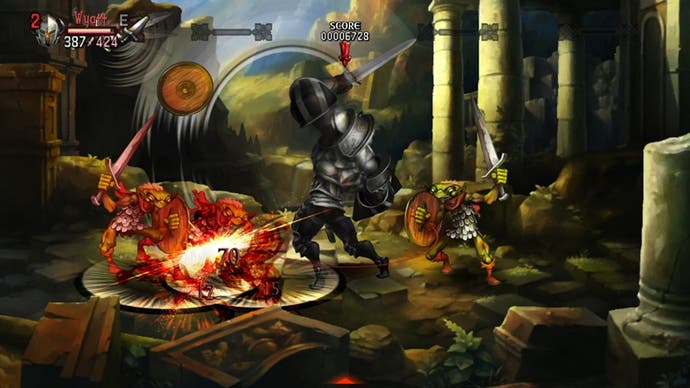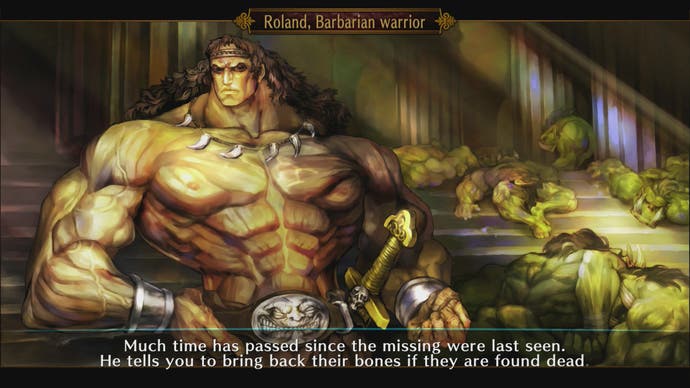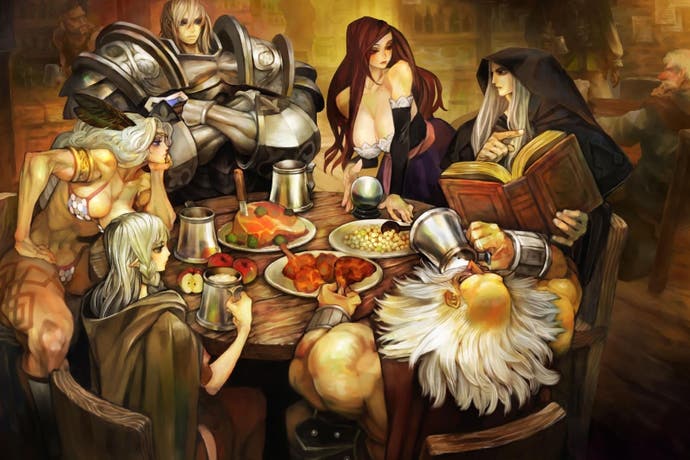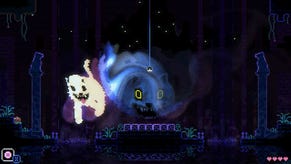Dragon's Crown review
Kamitani forever?
Dragon's Crown is a brawler as archaic as the fantasies it draws upon. Designer George Kamitani made his name with Capcom's Dungeons & Dragons arcade series of the early 90s - games that took on the lineage of Final Fight and furnished it with deep-pocketed inventories and experience points. That lineage was rudely cut short not long after, but Kamitani's Vanillaware studio has worked in the face of the genre's decline ever since, first with Odin Sphere and later Muramasa. They're games as artfully drawn as they are mechanically banal, though, and Dragon's Crown carries on that limp tradition.
Dragon's Crown is, like its predecessors, exquisitely realised. Whereas Muramasa took inspiration from a little closer to Vanillaware's Osaka home, Dragon's Crown sees Kamitani look westwards, towards the well-trodden worlds of Tolkien-esque fantasy. Kamitani's twist is at least unique, even if it's not particularly endearing. Warriors' muscles bulge impossibly as do, as has been widely noted, the sorceress' breasts. The characterisations, which more readily objectify women than they do men, are all part of a softly grotesque aesthetic - although it's never quite clear if Vanillaware's tongue is in its cheek or waggling rudely in an act of juvenile defiance. Nevertheless, while it's true that the dense colours of a dungeon can make Dragon's Crown feel like a playable painting, it's one any self-respecting adult would be embarrassed to hang on their wall at home.

Much else in Dragon's Crown seems trapped in adolescence. Its combat is an exercise in sweaty-palmed chaos that takes far too long to reveal its depth. Six character classes are presented, falling into two distinct camps: there's the melee of the Fighter, Amazon or Dwarf, or the fiddlier ranged combat of the Elf, Sorceress or Wizard. In coalition, they're a devilish swarm, with recruitable AI partners summoned from remains you find dotted around arenas joining your side, and when played solo they've some style. The Fighter's swinging aerial attack is a cocky treat, his ability to absorb party damage making him an analogue of the MMO tank. Elsewhere, the Amazon can be wound up towards feats of lethal acrobatics, while the Elf is a hybrid who can unleash flurries of kicks before retiring to the other side of the screen to fire off a volley of arrows.
They're a fierce and varied bunch, each offering a fundamentally different approach to Dragon's Crown's waves of enemies. A shame, then, that this broad selection is universally hampered by an overly reductive three-button control scheme - attacks are mapped to the single same button, with simple modifiers available through d-pad inputs, while the others are reserved for character-specific specials and an evade. It's unnecessarily fiddly, and as moves are unlocked through progression, claustrophobia soon sets in. Instead of the more graceful ruckus of Guardian Heroes - still the standard-bearer for scrolling beat 'em-ups, over 15 years on from its release - Dragon's Crown is a sweeping but often shallow mess.
The promise of depth beyond the swarm of fists, steel and magic only ever feels half-delivered. An emphasis on loot and skill progression evokes dungeon crawlers such as Diablo, and if it weren't for the unruly chaos of the combat there's enough in the way of treasures to warrant the comparison. Progression trees are split out across common skills and those specific to a class, but neither is explicit enough in charting progression, the effects never tangible enough on the battlefield. New moves get lost in the noise of war, and there's never the sense of truly powering up that more dedicated dungeon crawlers create.

Loot gathered on the field comes in different grades and can be identified at the end of a run for a small fee, leaving you able to sell your spoils or take them away to be equipped, and different sets can be constructed and switched in and out of on the battlefield. Again, though, there's a sloppiness that extends to the process of collecting loot itself - on Vita it's a case of using the touchscreen to tap on chests and shimmering parts of the scenery to discover what's hidden within, an inconvenience at the best of times that becomes an even more tiresome chore on the PS3, where you must guide a treacly cursor to the loot using the right stick.
It's a chaos of design, ideas and combat that defines Dragon's Crown, then, and a chaos that makes it hard to recommend to anyone looking for a gentle reminder of the simple charms of Golden Axe, Final Fight or even the Dungeons & Dragons games from which Vanillaware's own work was born. There's a twist, though, even if it is one as infuriating as many of Dragon's Crown's other choices. After a run-through of the story - which takes seven to eight hours - online multiplayer is unlocked, opening up a more coordinated and endearing brand of pandemonium, and after another run through what amounts to a hard mode, Dragon's Crown's other, more challenging difficulty opens up. It's here where the fighting comes into focus, and where human partners and tougher opponents reveal a depth previously missing in the move-sets.
But it's a chaotic logic that tries to justify a 15-hour trawl to reach something that resembles the breezy engagement of the scrolling brawler - a genre that, let's not forget, has its roots in 20-minute sessions fuelled by 50p coins. Dragon's Crown frustrates like this, and in many other ways too. Instead of a full-blooded reminder of a genre of games sadly departed, it's more often a reminder of why they died away in the first place.










